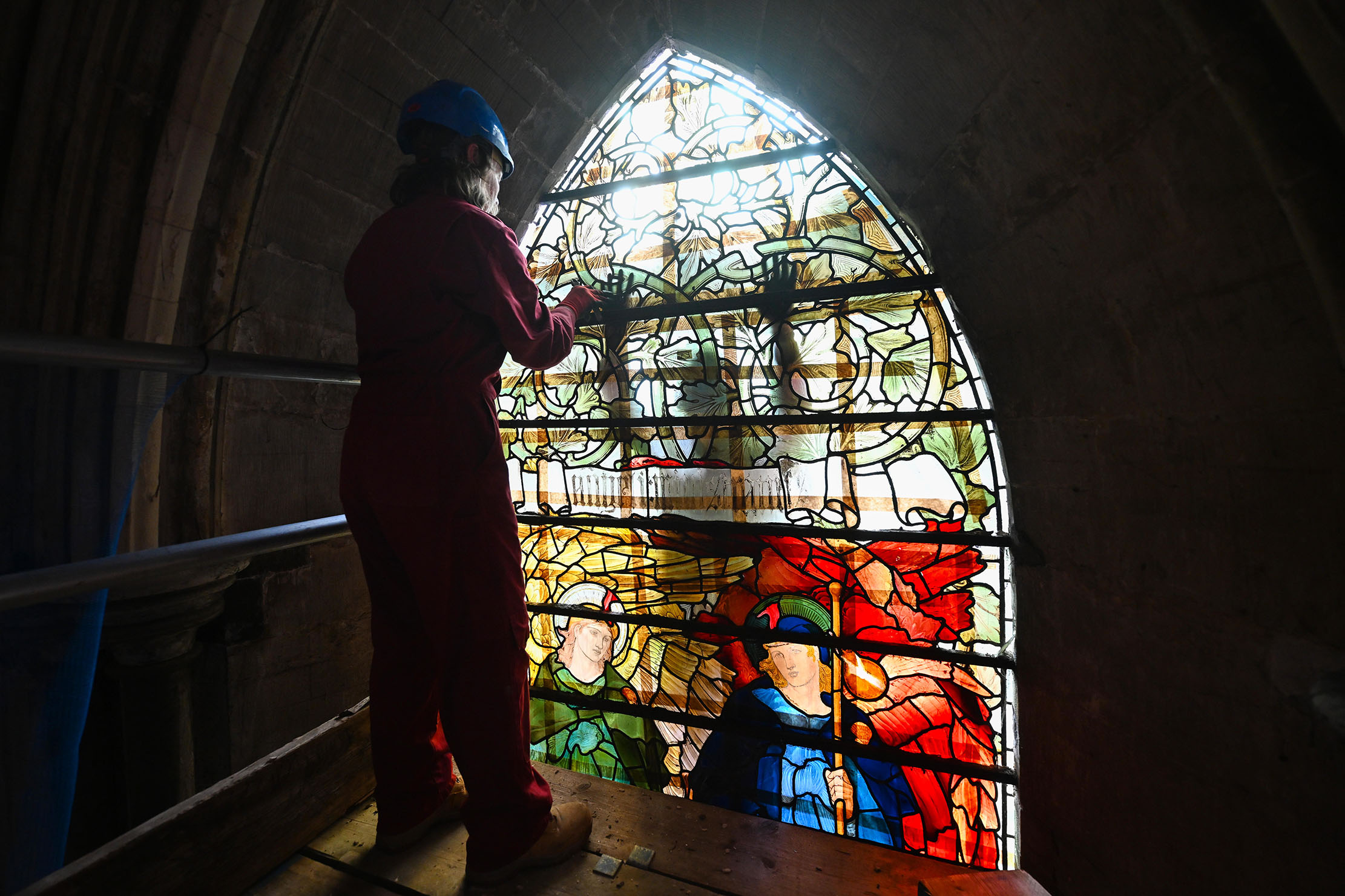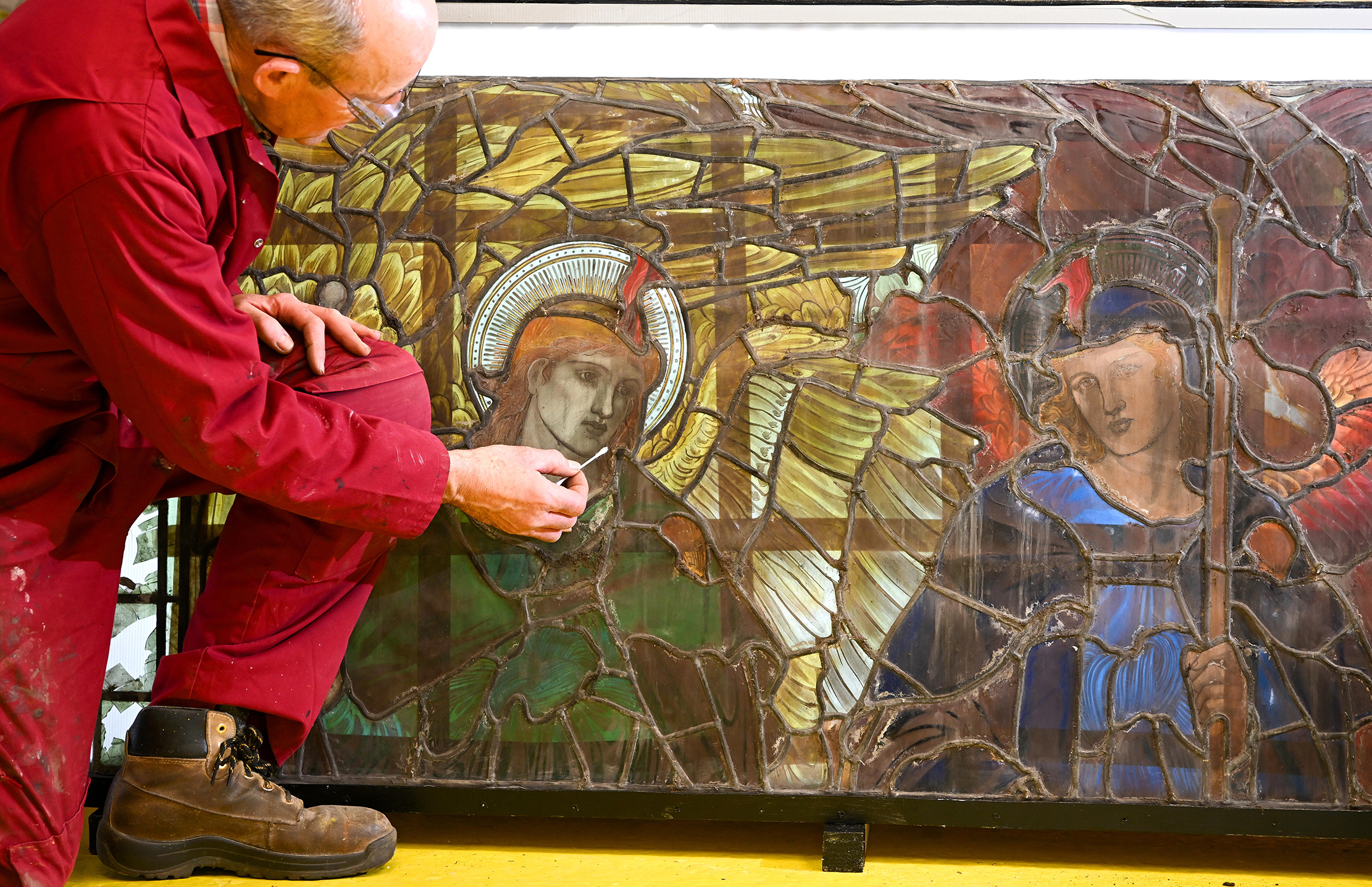The heart-stopping work of removing a 150-year-old stained glass masterpiece from one of Britain's greatest cathedrals
One of Salisbury Cathedral's most famous stained glass windows is being restored — and that means it must be removed in a painstaking process.


When, 145 years ago, Sir Edward Burne-Jones and William Morris’s stained-glass window was unveiled at Salisbury Cathedral in Wiltshire, it was not received favourably and what should have been a commission for a series of windows was swiftly reduced to just the one. Angeli Ministrantes and Angeli Laudantes (Angels Ministering and Praising) is now considered a pre-Raphaelite treasure and, last week, experts began the heart-in-mouth task of chipping away at the cement and removing the copper ties holding it in place, before removing it, cracking leadwork and all, from the frame in 6ft by 4ft sections to be taken away for restoration.
‘Despite their solid appearance, stained-glass sections of this size can be fragile, and it is always a relief to get them into the workshop. They are also incredibly heavy (about 40kg per section),’ explains head glazier Sam Kelly.

‘Exposure to the elements, especially condensation internally caused by ancient heaters in the cathedral (which have now been replaced) and water ingress have taken their toll. Painted details, especially on the faces and robes of the angels, have faded over time… and the colours and patterns have been dulled by layers of accumulated dirt.’
Mr Kelly and his team, from their on-site workshop, expect the job of cleaning the glass and adding painted and fired backing glass to replace lost detail based on Burne-Jones’s chalk drawings, as well as ensuring the original artwork is not altered, to take the best part of two years. Protective glazing and oak frames should shield the window against future deterioration.
The restoration of Burne-Jones’s ‘four colossal and sublime figures of Angels’ (for which he charged £80), as described in the 1878 Morris and Co account book, surrounded by Morris’s acanthus-leaf design, is expected to cost £120,000. About half that has been raised due to The Dulverton Trust and others and the cathedral is seeking donations via its website.

Exquisite houses, the beauty of Nature, and how to get the most from your life, straight to your inbox.
Annunciata is director of contemporary art gallery TIN MAN ART and an award-winning journalist specialising in art, culture and property. Previously, she was Country Life’s News & Property Editor. Before that, she worked at The Sunday Times Travel Magazine, researched for a historical biographer and co-founded a literary, art and music festival in Oxfordshire. Lancashire-born, she lives in Hampshire with a husband, two daughters and a mischievous pug.
-
 Suit yourself: I’m a 49 year-old man-about-town and I’ve never owned a suit
Suit yourself: I’m a 49 year-old man-about-town and I’ve never owned a suitWhen Hugh Smithson-Wright turned up to Country Life's annual Gentleman's Life party sans suit, it sparked a passionate conversation about why the formal fashion just isn't for everyone.
-
 'The ugliness and craziness is a part of its charm': The Country Life guide to Bangkok
'The ugliness and craziness is a part of its charm': The Country Life guide to BangkokWhere to stay, where to eat and what to do in the Thai capital.
